Self-Tapping vs. Self Clinching
Learn more about the differences between self-tapper screws for metal and a self-clinching fastener and which option is best for your application.
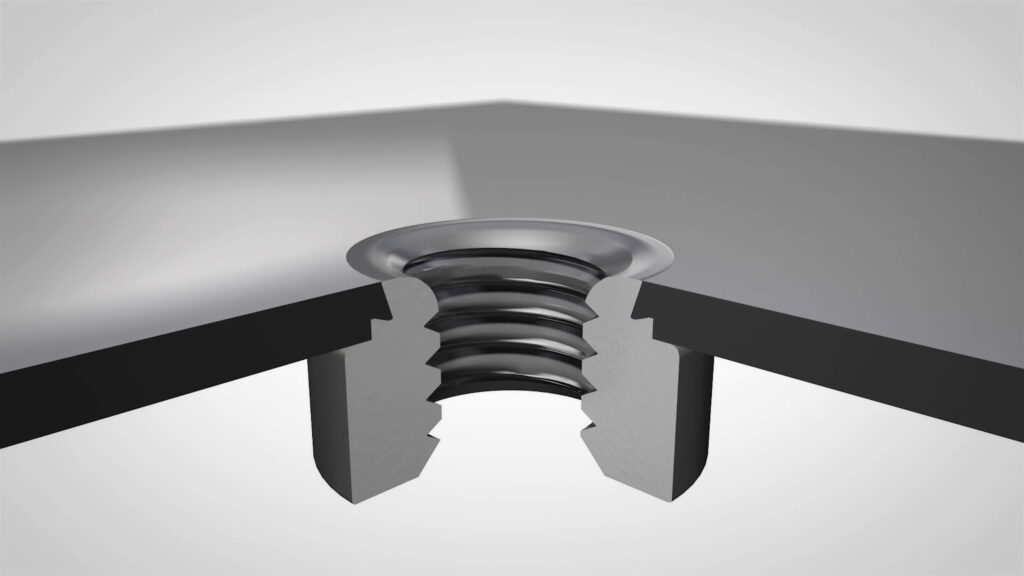
Self-Tapping vs. Self Clinching Fasteners: Which is Better?
Today’s design engineers have more flexibility when choosing a fastening solution than ever before. The need for parts that are lighter and thinner, yet stronger, has pushed the boundaries of fastening innovation and given engineers the ability to explore both conventional and newer alternatives.
This article discusses self-tapping screws and self-clinching fasteners, and the differences between each, so you can determine which joining method is best for your application.
In this article, we’ll cover:
- What Is a Self-Tapping Screw?
- Self-Tapping vs. Self-Drilling
- What Is a Self Clinching Fastener?
- How Self Clinch Fasteners Work
- What Are The Benefits of Self-Clinch Fasteners?
- Types of Self Clinch Fasteners
- Self-Tapping vs. Self Clinching: Which is Better?
- Learn More About Self Clinching Fastener Technology
What Is a Self-Tapping Screw?
A self-tapping screw removes the need for a tap because it cuts its own thread when driven into a mating material, such as metal. These screws come in a wide range of sizes and tips, and a variety of head types.
Because some self-tapper screws for metal can’t drill their way through the material, a pilot hole may need to be pre-drilled prior to the fastening process. In order for the screw to be securely fastened to the mating material, the diameter of the pilot hole should be smaller than the screw.
In the extrude and tap process, the panel must first be punched in order to extrude the sheet metal which effectively thickens the sheet metal. Then a self-tapper screw is inserted.
Self-Tapping vs. Self-Drilling
Is there a difference between self-drilling and self-tapping screws? The answer is yes, but the terms are often interchanged.
As for similarities, both types of screws can fasten metal components and have the ability to tap their own threads.
While a self-tapping screw may require a pre-drilled pilot hole, a self-drilling screw does not. Its sharp threads and drill-bit shaped point allows it to easily self-drill through a range of metal materials. This not only makes installation faster, but also can save money by removing the need for a pilot hole.
So, all self-drilling screws are self-tapping screws, but not all self-tapper screws are self-driller screws.
What Is Self Clinch?
One fastening alternative to the more conventional self-tapping screws for metal is the self-clinch fastener. The technology behind this type of fastener is what changed the landscape of production fastening and put PEM® fasteners on the map as a global industry standard.
How Self Clinching Fasteners Work
When pressed into ductile material, a self-clinching fastener displaces the host material around the mounting hole, causing it to cold flow into a specially designed annular recess in the shank or pilot of the fastener.
A serrated clinching ring, knurl, ribs, or hex head prevents fastener rotation in the host material once inserted – becoming a permanent part of the piece into which it’s installed.
Self-clinch fasteners install with any parallel acting press that can be adjusted to optimum installation forces.
The process is broken down into 3 simple steps:
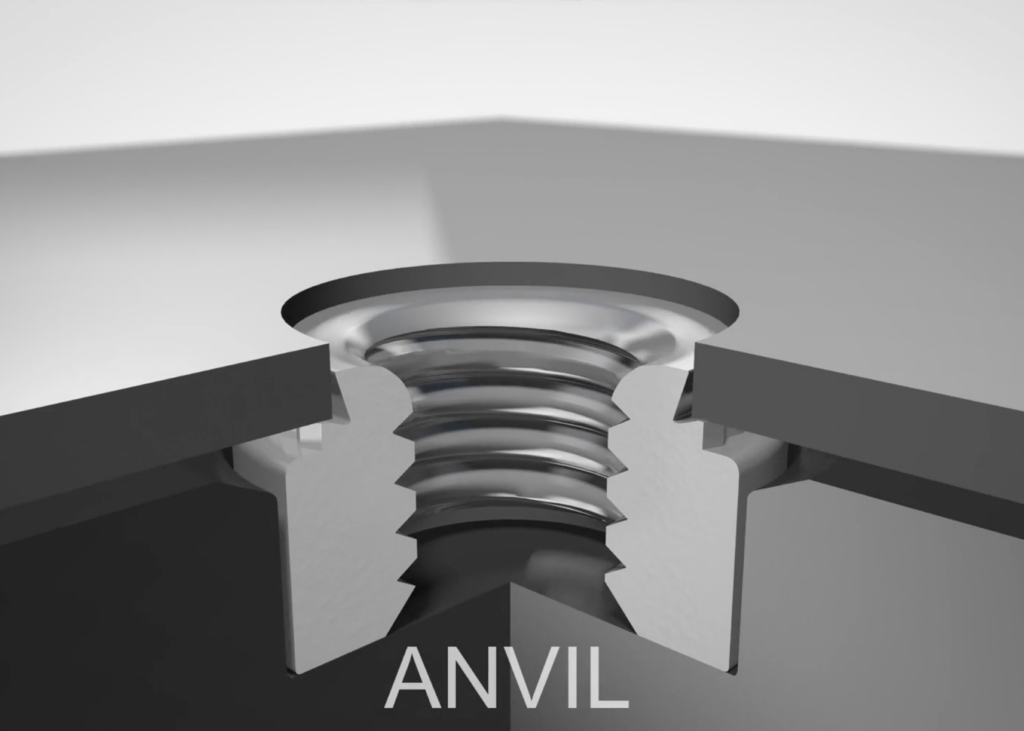
Step 1: Place the fastener into the anvil hole and place the mounting hole over the shank of the fastener.
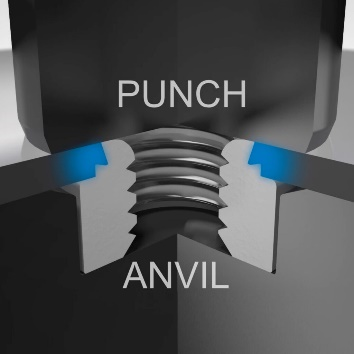
Step 2: With installation punch and anvil surfaces parallel, apply squeezing force until the head of the clinch nut comes in contact with the sheet material.
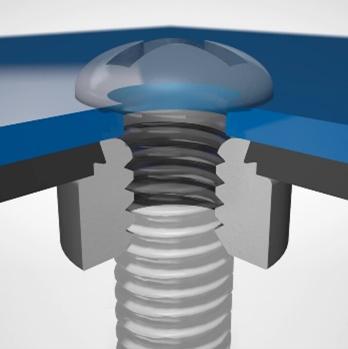
Step 3: Install the mating piece from the side opposite the head of the fastener.
What Are The Benefits of Self Clinching?
Self clinching fasteners have greater reliability and more holding power than extruded/tapped or stamped threads, achieving strong threads/attachment in metal as thin as 0.20 mm/.008”. They’re a reliable choice where high pushout and torque-out resistance are required in sheet metal that is too thin to provide secure fastening by any other method.
Other advantages of self clinching technology include:
Clean Process
Self-clinching fasteners are cleaner and more environmentally friendly than other joining methods such as weld – with no weld splatter and less energy consumption.
Design Flexibility
Able to be fastened to dissimilar materials – common steel, HSS, and many others.
In-Process Installation
Fasteners are easily and efficiently installed into a plain round hole, with no secondary options needed.
Cost Reduction
Achieve decreased installation cycle times for both medium-volume and high-volume applications.
Industries That are Using Self Clinch Technology
The versatility of the PEM® self-clinch fastener is leveraged by a number of industries across diverse applications:

Consumer Electronics
Applications:
Laptops, Wearables, Smart Phones, Gaming, IOT

Datacom/Telecom
Applications:
5G Network Infrastructure, Data Centers, Servers, Switches, Routers

Industrial/Commercial
Applications:
Alternative Energy Generating Equipment, Lawn and Gard, Farming and Construction, Lighting, Marine, Rail and Other Transportation

Medical
Applications:
Lab Instruments, Digital Imaging, MRI/CT Scanners, Ventilators, Blood Analysis Testing, Mobile Workstations
Types of Self Clinching Fasteners
PEM® Self clinching technology can be applied to many fastener types to combine the benefits of self clinching with a broad range of fastener functionality.
We offer an extensive catalog of standard fasteners which makes it usually possible to meet your design requirement. For more complex applications where a custom design and manufactured fasteners is needed, our PEMedge® Services offers application engineering support along with comprehensive testing. Talk to one of our experts today to learn more about all of our in-house capabilities.
Self-Tapping vs. Self Clinch: Which Is Better?
Depending on the application, a self-tapping screw can be the preferred choice when fastening to metal. With the use of a simple drill press, a strong attachment can be achieved as long as the mating material has good thickness. But the thread is limited in strength based on the material.
In applications that do not require good aesthetics, a self-tapping screw can do the trick.
Another important consideration is that the extrude and tap method may create chips of metal in between the mating parts when using a thread cutting screw, which is problematic for electrical or food applications, among other applications.
However, you can achieve a stronger joint with self-clinching technology vs. the extrude and tap method, especially in thinner mating materials.
For applications that require sleek cosmetics, a self-clinching solution is usually the better choice.
The advantage of using PEM® self-clinching panel fasteners is that it’s possible to eliminate all loose hardware. This can simplify and expedite component mounting and assembly operations, including those performed in the field.
The bottom line is that your application will ultimately drive which fastening option is better.
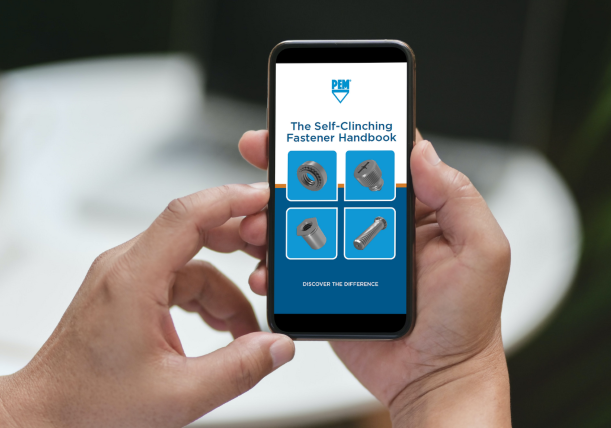
Learn More About Self Clinching Fastener Technology
Discover all the advantages of PEM® self clinching technology and how it can be applied to many types of fasteners – from standard portfolio options to custom solutions.
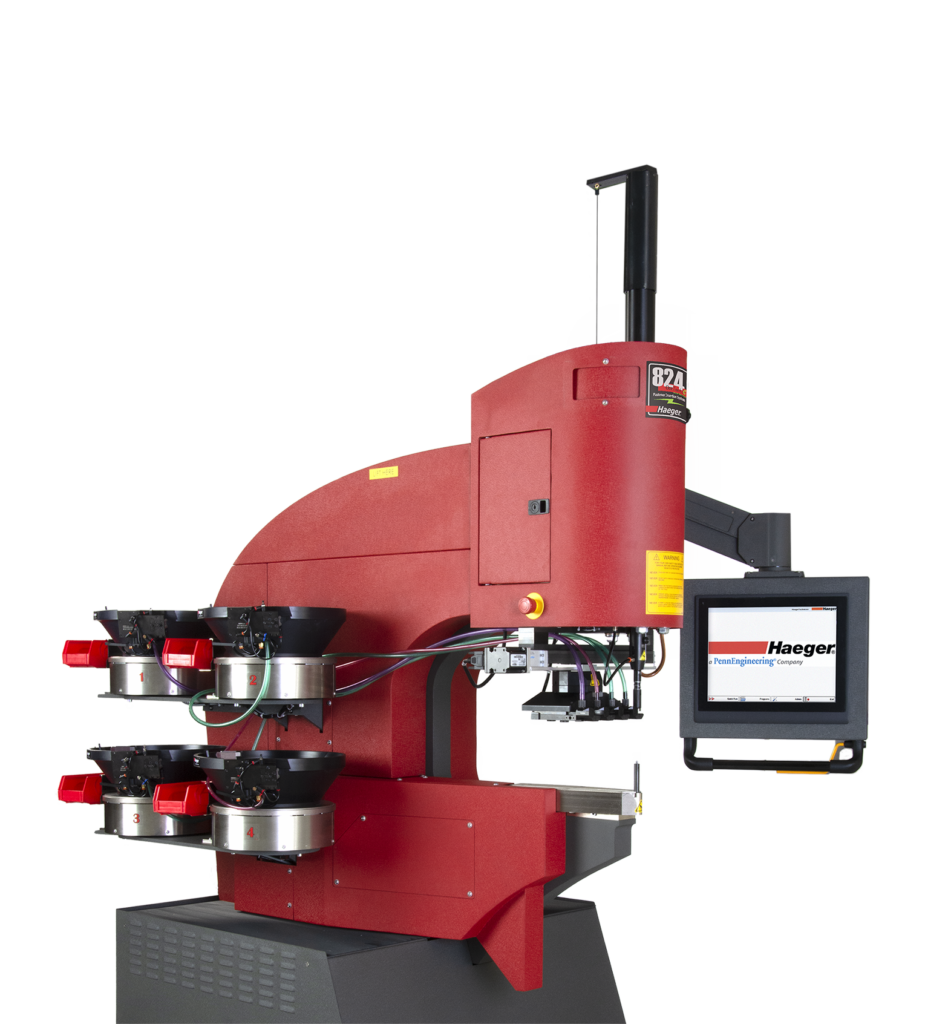
Featured and Related Resources
Installing Self Clinching Fasteners
Whether you have a medium-volume or high-volume application, there are cost-effective and energy-saving solutions available for self clinching fastener installation. Learn more about Haeger® robotic/manual installation and PEMSERTER® in-die installation.
Have a question?
Talk to an Engineer.
See what’s possible.
Connect with a PEM® engineering expert today and discover a reliable, cost-effective fastening solution for your challenging applications.
Or Call Us: 1-800-342-5736